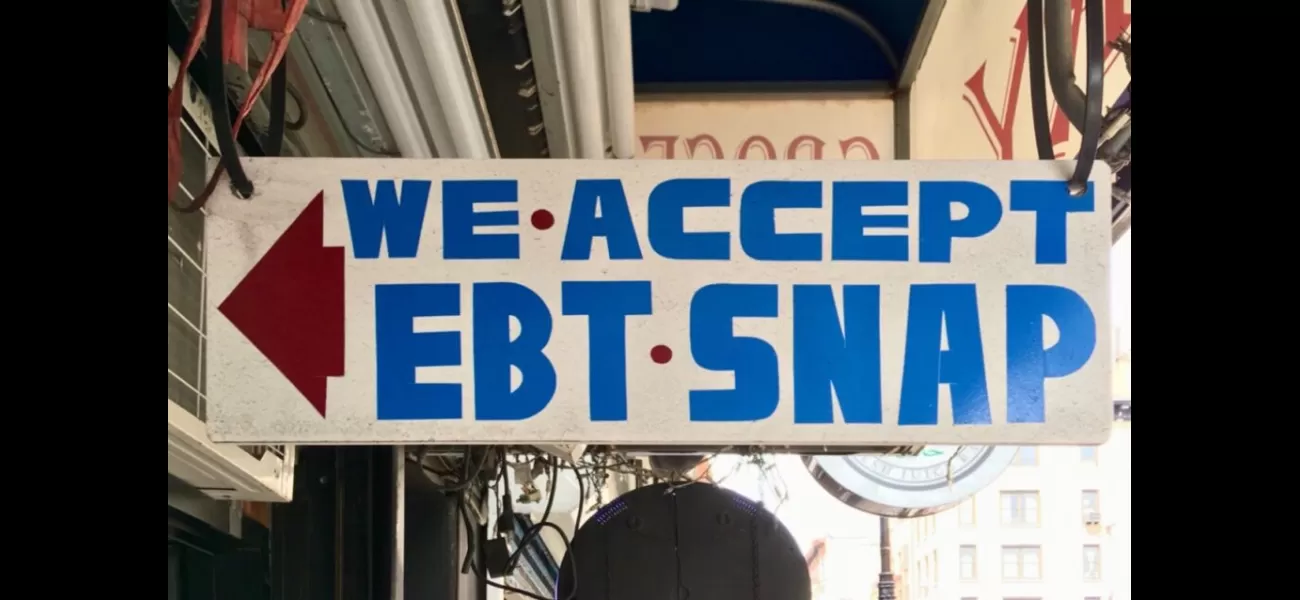Many Americans are not getting SNAP assistance because of various reasons.
A highly effective anti-poverty program has aided individuals from all backgrounds, earning it recognition.
July 10th 2024.

The Supplemental Nutrition Assistance Program (SNAP), also known as food stamps, has been facing a persistent issue that is affecting many households. According to recent data released by the United States Department of Agriculture's Food and Nutrition Service, one in ten households is not receiving the correct amount of benefits each month. This program provides financial aid to low-income individuals and families to help them purchase food, but unfortunately, there has been an error in the distribution of these payments since 2023.
The overall error rate for SNAP payments in the United States is at a concerning 11.68%, with over 10% of recipients receiving more benefits than they are entitled to, and 1.64% receiving less. This means that many program participants are either receiving too much or too little assistance, which can greatly impact their ability to provide for themselves and their families. In response to this issue, the administrator for the Food and Nutrition Service, Cindy Long, has expressed the department's zero tolerance policy towards such high error rates.
Long emphasizes the importance of accurate benefit payments in maintaining public trust and supporting families in need, stating that SNAP is a crucial part of our nation's safety net. This program has helped millions of people from various demographics, particularly African Americans. In fact, data shows that SNAP has been instrumental in keeping 1.2 million African American families out of deep poverty. This is significant as the poverty line for a family of three is an average monthly income of $940, but with the average SNAP benefit of $390, this increases by 29% to $1,330.
However, the constant error rates are hindering the program's effectiveness and impacting the accuracy of eligibility and benefit amounts. According to Newsweek, states in the Northeast have the highest rates of underpayments, with Washington D.C. and Maryland topping the list. On the other hand, Alaska and New Jersey have the highest rates of overpayments, with Alaska at a staggering 59.59%.
To address this issue, the department has requested additional funding from the president's FY25 Budget to improve the program's payment accuracy and integrity. This includes investing in quality control, new computer systems, and a new Office of Training and Development. Additionally, states with poor error rates will be required to submit a plan of corrective action to address the root cause of these errors.
In related news, there has been a decline in unemployment benefit applications, signaling a robust job market in the United States. This is good news for the economy and may also lead to a decrease in the number of households relying on SNAP benefits. However, it is crucial to ensure that the program operates efficiently and accurately to continue supporting those in need.
The overall error rate for SNAP payments in the United States is at a concerning 11.68%, with over 10% of recipients receiving more benefits than they are entitled to, and 1.64% receiving less. This means that many program participants are either receiving too much or too little assistance, which can greatly impact their ability to provide for themselves and their families. In response to this issue, the administrator for the Food and Nutrition Service, Cindy Long, has expressed the department's zero tolerance policy towards such high error rates.
Long emphasizes the importance of accurate benefit payments in maintaining public trust and supporting families in need, stating that SNAP is a crucial part of our nation's safety net. This program has helped millions of people from various demographics, particularly African Americans. In fact, data shows that SNAP has been instrumental in keeping 1.2 million African American families out of deep poverty. This is significant as the poverty line for a family of three is an average monthly income of $940, but with the average SNAP benefit of $390, this increases by 29% to $1,330.
However, the constant error rates are hindering the program's effectiveness and impacting the accuracy of eligibility and benefit amounts. According to Newsweek, states in the Northeast have the highest rates of underpayments, with Washington D.C. and Maryland topping the list. On the other hand, Alaska and New Jersey have the highest rates of overpayments, with Alaska at a staggering 59.59%.
To address this issue, the department has requested additional funding from the president's FY25 Budget to improve the program's payment accuracy and integrity. This includes investing in quality control, new computer systems, and a new Office of Training and Development. Additionally, states with poor error rates will be required to submit a plan of corrective action to address the root cause of these errors.
In related news, there has been a decline in unemployment benefit applications, signaling a robust job market in the United States. This is good news for the economy and may also lead to a decrease in the number of households relying on SNAP benefits. However, it is crucial to ensure that the program operates efficiently and accurately to continue supporting those in need.
[This article has been trending online recently and has been generated with AI. Your feed is customized.]
[Generative AI is experimental.]
0
0
Submit Comment





